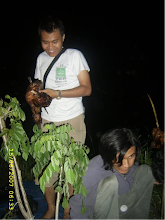At the time of the Prophet and all the first four caliphs foreign coins with different weights are well known in Arabia, like the dinar, a gold coin and a silver coin and a copper coin filthy lucre. Dinar value equal to ten dirhams. Value of one dirham equals 48 filthy lucre. Filthy lucre coin used for the purchase of cheap goods. The weight of the dinar is equal to one mitsqal or equal to two hundred twenty qirat or barley grain. One mitsqal also equivalent to 4.25 grams (Johnson, 1968:547). Weight dirhams not uniform. To avoid confusion, Umar ruled that a silver coin weighing 14 or 70 grain qirat barley. Then the ratio between the dirham and one mithqal is seven-tenths (Sabzwari, 1984). At the time of Caliph Abu Bakr Assidiq, he did not make changes to the circulating currency dinar and dirham is still the country's currency unit (Al Maqrizy, 1988:129)
At the time of Caliph Umar ibn al-Khattab, the Muslims of financial administration is delegated to the people of Persia. At that time Umar hired bookkeeper and accountant Persian people in large numbers to adjust income and expenditure of money in the Baitul Maal (state finances). They also use the unit coin to help improve the circulation of money. During the Caliphate Umar also published a letter that use check payment accepted by the community. According to Al-Yaqubi, Umar instructed to import some goods from Egypt to Medina. Because the goods imported large numbers, distribution become restricted. Therefore, the Caliph Omar published a number of checks to people who are eligible and that households gradually everyone can go to the treasury of the Muslims and collecting treasure. The use of checks by the Caliph Omar received by the public to show its use as a means of payment in the early period of Islam (Sadr, 1989).
Defeat of Persian mint continued to operate. At the time of Caliph Uthman ibn Affan existing currency that reads Bismillah, Barakah, Rabbi Bismillah, Allah and Muhammad with a kind of writing Kufi (Al Maqrizy, 1988:60). Even Usman treat the immigrants did not like at the time of 'Umar could not move around. The immigrants are allowed to move in all the empires that had been banned, and acquire sufficient wealth and pleasures abundant. Life versatile easier than in the days that Omar had to restrain myself (Haykal, 1973:119).
Transactions naturally in the area of Egypt or Syria to use the dinar as a medium of exchange, whereas in the Persian Empire using dirhams. Expansion of Islam to the region made Persian Empire (Iraq, Iran, Bahrain, Transoxania) and the Roman Empire (Syria, Egypt, Andalusia) causes the velocity of currency is increased. Even during the reign of Imam Ali, the dinar and the dirham is the only currency used (Sadr, 1989).
When the currency was imported, the Muslims only control the quality of the imported money, but after scoring the Muslims themselves directly control the money supply (Sadr, 1989). Caliph Ali ibn Abi Talib scored dirhams modeled Khalif Uthman ibn Affan and write in the ring one sentence Bismillah, Barakah, Bismillah Rabbi and the kind of writing Rabiyallah Kufi (Al-Naqsyabandi, 1969:22).
Selasa, 10 November 2009

Langganan:
Posting Komentar (Atom)
eNews & Updates
Search 2.0
Recent Posts
Labels
- Bisnis (11)
- Budaya (12)
- Kabar Daerah (1)
- Teknologi (4)
Tags
- Bisnis (11)
- Budaya (12)
- Kabar Daerah (1)
- Teknologi (4)
Blog Archive
-
▼
2009
(11)
-
▼
November
(11)
- Muhammad The Real Enterprenuer
- Preemtive Strategy
- ENTREPRENEUR VIRUS
- FISCAL POLICY ON THE RASULULLAH S.A.W. ERA
- MARKETS ON ROSULULLAH ERA (1)
- PRIMARY STATE INCOME AT BEGINNING OF PERIOD ON ISL...
- MONETARY POLICY IN FIRT CENTURY OF ISLAM
- DEVELOPMENT INVESTMENTS ON RASULULLAH (1)
- Changing Dollars To The Dinar
- Wakaf
- Hikmah Concluding
-
▼
November
(11)

komentar
0 Responses to "MONETARY POLICY IN FIRT CENTURY OF ISLAM"Speak Your Mind
Tell us what you're thinking...
and oh, if you want a pic to show with your comment, go get a gravatar!